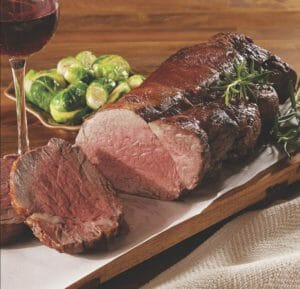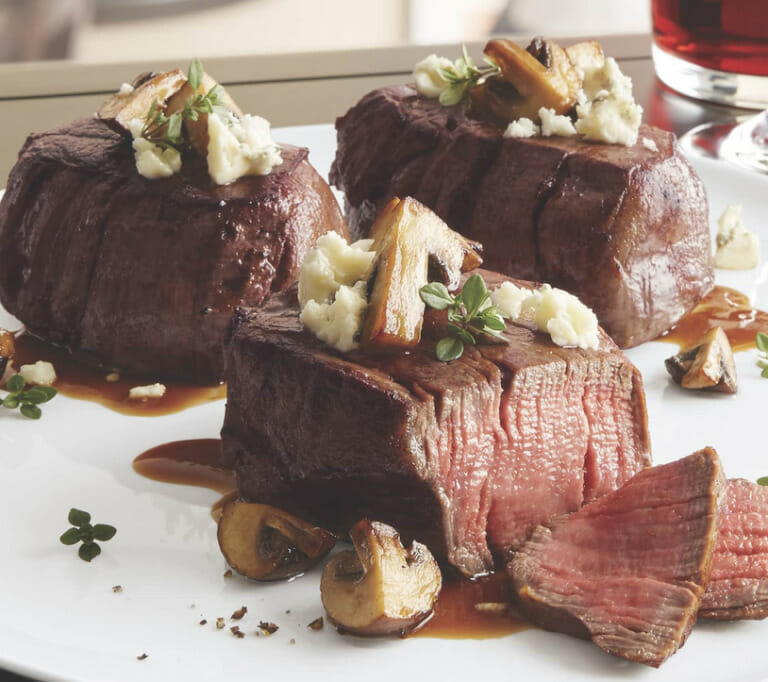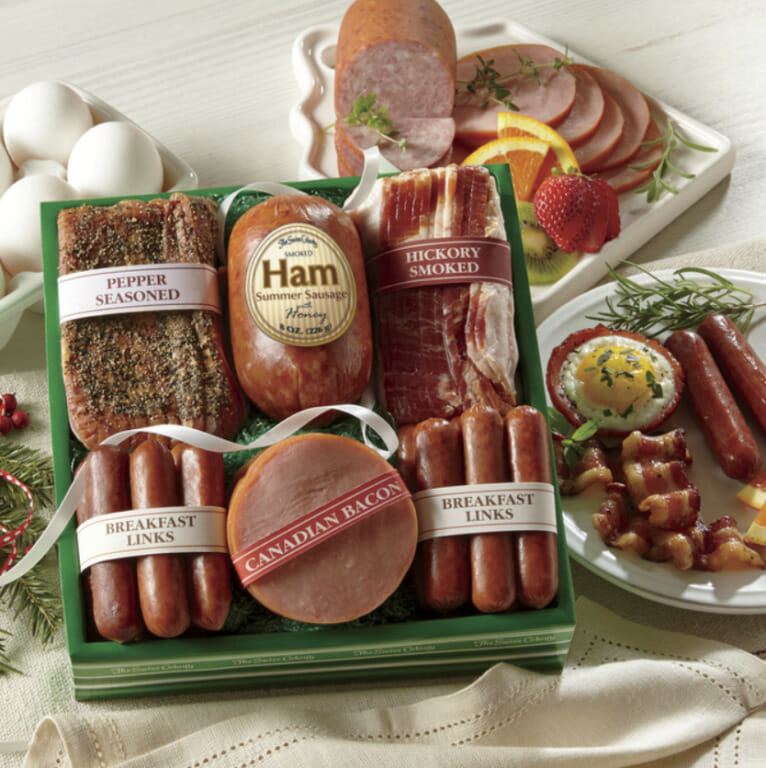A Guide to Choosing Beef: Cuts of Meat
What are the leanest cuts of beef? What is the best cut for roast beef? What is the best cut of steak? We’ll guide you through the different cuts of beef and give you a handy chart to help you decide.
So you’re planning a dinner party…or perhaps just a family meal. You know you want to serve beef, but aren’t sure which cut to buy. There are so many choices, and that inexpensive round steak looks just as good as the more expensive cuts of beef. What’s the difference? What’s the best cut of beef?
Well, there are plenty of differences…and the “best” depends on what your plans are. The good news is that the most expensive cuts of beef aren’t necessarily the best—again, depending on how you intend to cook them. To gain a better understanding of the different cuts of beef, let’s take a little anatomy lesson.
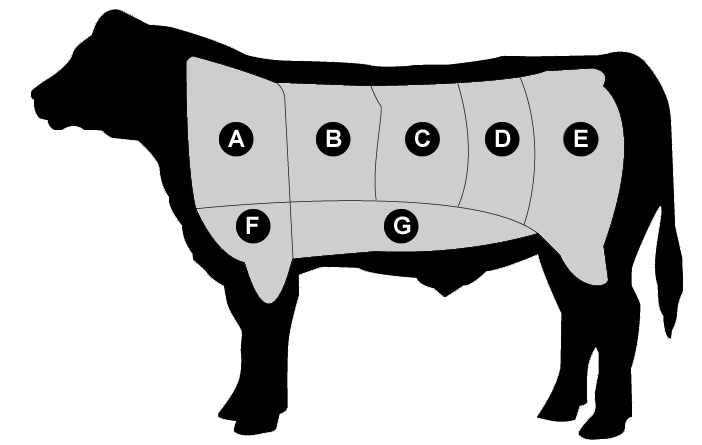
Primal Cuts of Beef
A beef carcass is divided into eight primal cuts, or sections: chuck, brisket, shank, rib, short plate, loin, flank, and round. Each primal cut is then sectioned into subprimal cuts. This highly simplified chart groups some lesser primal cuts together, and separates an important subprimal cut that differs greatly from its primal section. These different cuts of beef have varying characteristics (tenderness, moisture, flavor) determined by the size and makeup of the muscle tissue.
Meat is muscle, composed of cells held together by connective tissue called collagen (a membrane). Another connective tissue, elastin, makes up tendons and ligaments that connect muscle to bone. Collagen will break down into gelatin and water when cooked; elastin will not and should be removed. Some cuts will also have quite a lot of intramuscular fat, giving them a “marbled” look and a tender, juicy texture; the leanest cuts will have no marbling at all and can be dry and/or tough if not cooked correctly. Armed with this information, let’s examine the various primal cuts of beef:

Chuck
The chuck is the shoulder. As this is a very well-used muscle group, it is loaded with connective tissue, very lean and, as you can imagine, very tough. The chuck is usually ground into hamburger or cut into stew meat or pot roasts (arm and shoulder roasts), which require long moist-heat stewing or braising to break down the collagen. However, there are some hidden gems to be found within the chuck: the chuck eye steak (known as poor man’s rib eye) and the top blade, or flat iron steaks.
Rib
This primal cut includes part of the ribs, plus a portion of the spine and the large muscle located between the spine and ribs. This center muscle is very tender and contains a lot of intramuscular fat (marbling), and is one of the most desirable cuts of beef. Bone-in prime rib and boneless prime rib roasts come from this primal cut, as do rib-eye steaks, which are cut individually from the roasts. These prized cuts are cooked in dry heat (roasted, grilled or seared in a skillet) to preserve their flavor and juiciness.
Read here for more on the bone-in prime rib roast.
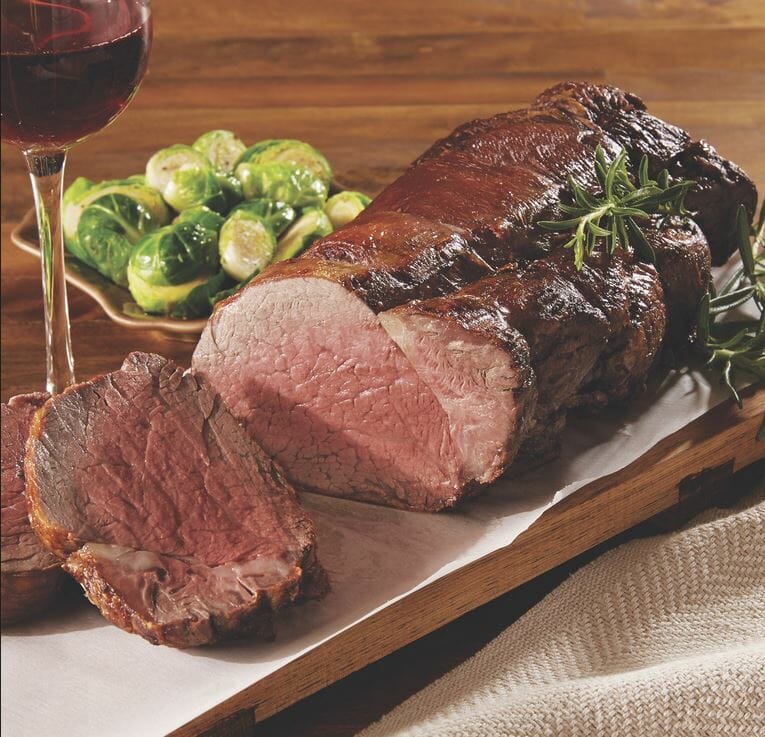
Loin
The loin is actually two subprimal cuts—the strip loin (backstrap) and the tenderloin—and contains the most tender and prized cuts of meat. The strip loin, the larger of the two, is a cylindrical muscle running along the spine. The tenderloin is a smaller, snake-shaped muscle running parallel to and beneath the strip loin. Steaks cut from the boneless strip loin are known as New York Strip Steaks. The tenderloin may be sold in roast-sized chunks for chateaubriand, or sliced into individual steaks known as filets mignons (read here for more on the filet mignon). A steak cut to include both the strip and the filet separated by the t-shaped bone between them is called a T-bone steak. When a T-bone steak is cut from farther back on the short loin, where the tenderloin is thicker, it is known as a porterhouse. Loin is not as marbled (fatty) as the rib-eye, nor is it among the leanest cuts. All loin cuts are best dry-heat cooked like the rib cuts.
A third subprimal cut from the loin, the sirloin, is the back part of the midsection connecting the loins to the hips. While the sirloin is not as tender as the loin cuts, it is actually quite lean; top sirloin steak is considered “extra lean” by the USDA. Sirloin makes a fine steak or roast and is loved for its more robust, “beefy” flavor and more moderate price. It also makes some of the most premium ground beef available.
Round
The round is the hind leg of the animal. Like the chuck, it is a heavily used muscle that’s very lean and full of connective tissue…but unlike the chuck, it doesn’t contain hidden treasures like the flat iron. It yields roasts and steaks which must be stewed or braised in order to make them tender (Swiss steak is a favorite), and is also a primary source for lean ground beef.

Shank and Brisket
The foreshank (arm) is very flavorful and high in collagen, and is typically sold as “soup bone” for making soups and stocks. The brisket (breast) is very tough and contains quite a bit of fat. It is generally brined to make corned beef* or cured to make pastrami, and has found great favor with barbecue chefs, who smoke it for great lengths of time to make some of the finest barbecue to be found.
*Did You Know? Corned beef has nothing to do with corn. It gets its name because the grains of salt used to make its brine were thought by the British to resemble grains, or corns, of barley. What we in America call “corn” is called “maize” in the rest of the world.
Plate and Flank
The short plate contains the rib bones and is located directly beneath the primal rib cut. The flank, adjacent to the plate and below the loin, is basically the side of the animal. Short ribs come from the plate and are marinated and grilled or stewed. Skirt steaks and hanger steaks, also considered part of the plate, are actually part of the diaphragm…which is, after all, a muscle. The hanger steak, the part attached to the last rib and the spine near the kidneys, is one of the tenderest cuts on an animal. It is best marinated, cooked quickly over high heat, and served rare or medium rare because it can become chewy. The tougher skirt steak, from within the diaphragm, is often marinated and sliced to use in preparing fajitas. Flank steak and London broil come from the flank. They are tough yet flavorful cuts that do well cooked in moist or dry heat.
Now that you know the basics of beef, you can browse the meat market and plan meals with more confidence. And, of course, if you want to treat the family to a steakhouse-quality experience you won’t find in the supermarket, splurge on some premium aged beef once in a while.
